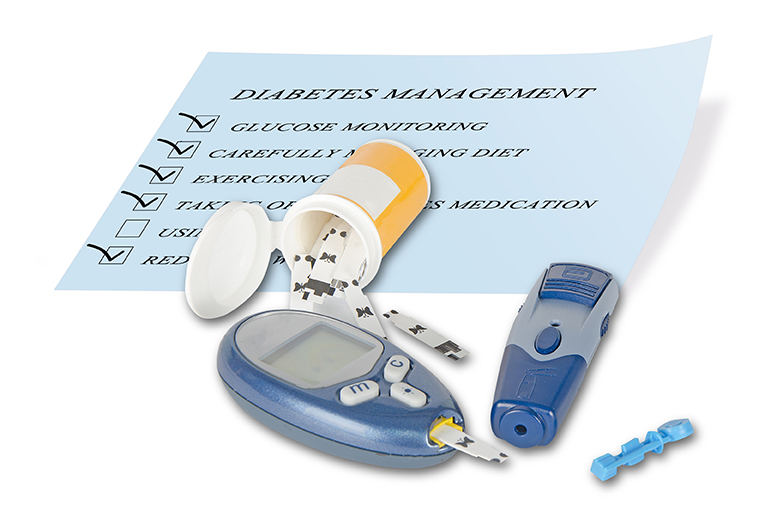CGM Devices Represent the Era of Digital Diabetes Management

Did you know that more than 463 million adults worldwide were living with diabetes in 2019? The International Diabetes Federation (IDF) estimates that this figure will hit nearly 700 million by 2045. The need for accurate, personalized, and evidence-based care solutions is driving constant new trends and developments in the digital diabetes management industry.
In addition, the IDF states that elderly people with pre-existing medical conditions such as diabetes tend to be more vulnerable to getting severely ill during the coronavirus outbreak. Viral infections such as COVID-19 may be harder to treat among people with fluctuations in blood glucose levels as well as face the risk of complications.
These factors are contributing to the global traction digital solutions for diabetes monitoring and management have been making. Many diabetes patients are investing in advanced care solutions to manage the condition remotely and avoid hospital visits amid the outbreak.
The sustained nature of the COVID-19 pandemic indicates that the adoption of such devices and solutions in homecare settings will continue to increase over the next few years. Robust trends will power the global digital diabetes management market, which is slated to reach a valuation of about $54 billion by 2027.
Type-2 Diabetes Highly Prevalent but also Highly Manageable
Type-2 diabetes is the most prevalent form of diabetes. In fact, it accounts for nearly 90–95% of all diagnosed diabetic adults, according to the CDC. People suffering from type-2 diabetes are at a significantly higher risk of death compared with people of the same age without diabetes, making it one of the leading causes of mortality. It is also known to increase the risk of heart disease, stroke, hypertension, kidney disease, and nervous system complications.
According to Global Market Insights, Inc., the digital diabetes management industry share from type-2 diabetes segment was valued at approximately $12 billion in 2020, and it is likely to grow substantially in the future. Although this disease is highly prevalent, its side effects can be easily managed, or its onset delayed with the help of advanced, customized digital solutions.
These devices and applications can be used for regular monitoring of blood pressure, blood sugar levels and blood cholesterol levels. One of the biggest advantages of digital tools in diabetes management is their ability to capture and interpret data seamlessly. Today, digital solutions are being designed to cover many aspects of diabetes management, as evident from the upcoming pointers.
Technological Innovations Take CGM Devices to the Next Level
Continuous glucose monitors (CGM), smart glucose meters, insulin pens, insulin pumps and patches are among the popular types of diabetes management products. Among these, the demand for CGM devices is projected to increase at a CAGR of more than 18.8% up to 2027 worldwide.
CGMs are used by diabetes patients to monitor their blood glucose levels throughout the day reliably and accurately, eliminating the need for the conventional finger-prick tests. These devices have gained popularity mainly due to their convenience and ease of use.
Leading medical device makers as well as technology giants are constantly innovating to bring novel products and solutions to the market. For instance, in November last year, Medtronic had rolled out a new CGM-integrated smart insulin pen called InPen, designed for multiple daily injections. The smart insulin pen features Medtronic’s Guardian Connect CGM system.
The new InPen is currently the only digital diabetes product approved by the FDA for use among patients requiring multiple daily injections. The company had made the announcement shortly after its acquisition of smart insulin pen manufacturer Companion Medical.
In March, Apple Inc. announced plans to bring a new health tech to the Apple Watch Series 7 that could help users manage conditions such as diabetes more conveniently. The Apple Watch Series 7 reportedly features a CGM system powered by a non-invasive optical sensor, eliminating the need for an implant.
Apple has reportedly secured patents around glucose monitoring tech and the company may be working on enhancing the stability and reliability of the technology prior to its commercialization.
New Solutions for Homecare Settings Are Fast Emerging
The adoption of digital diabetes care solutions has increased many folds during 2020 as more and more patients looked to cut down on in-person care amid the COVID-19 pandemic. Leading manufacturers are developing new tools to help manage diabetes patients remotely.
Citing an instance, in September 2020, Roche upgraded its Diabetes Care Platform with a new remote patient monitoring tool. Doctors and healthcare staff can enroll their patients in the remote monitoring tool and customize it for each patient. The platform can give physicians alerts in case of irregularities in blood glucose data that the patient is uploading over time.
It also allows the doctor to send secure messages if there’s an issue or an irregularity is spotted. The healthcare team can also remotely make adjustments to the treatment plan based on the patient’s progress.
Diabetes could be well-suited to remote care and management as digital tools can seamlessly connect healthcare providers with the patients and reduce the need for doctor visits. It has been predicted that the digital diabetes management market size from homecare applications will expand at a faster pace in the coming years.